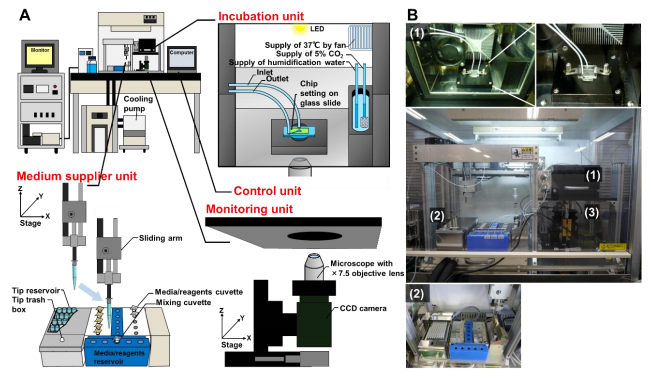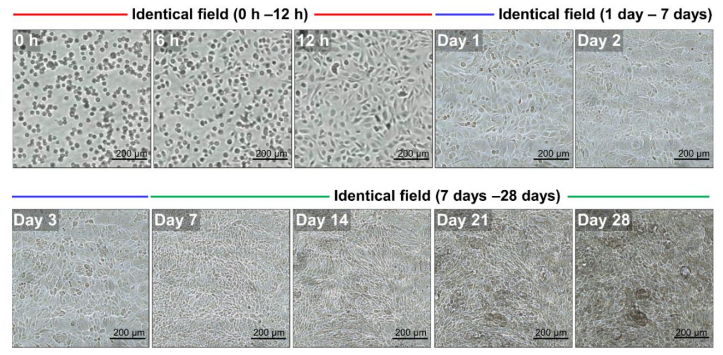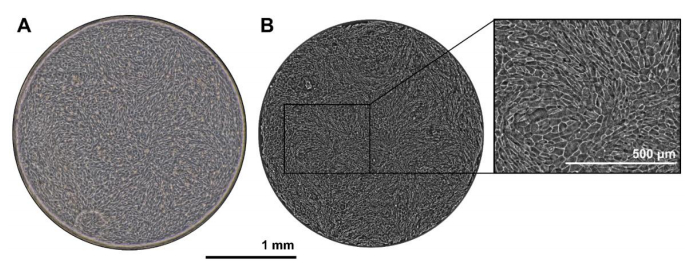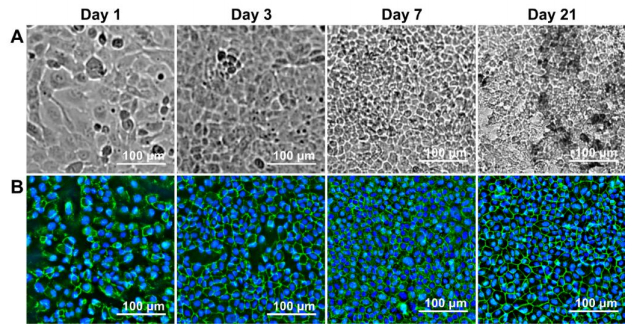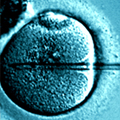1. Introduction
Age-related macular degeneration (AMD) is one of the most common causes of poor vision occurring after the age of 60 years, affecting 30–50 million people globally [1,2,3]. The dysfunction and/or loss of retinal pigment epithelial (RPE) cells plays a critical role in the degeneration of photoreceptors and the subsequent blindness in AMD. Currently, there is no cure available for AMD, and even palliative treatments are rare [1,4,5]. Human induced pluripotent stem cells (hiPSCs) have been proposed to be an unlimited source of RPE cells, and attempts have been made to use them as a method of treatment in AMD. In fact, autologous hiPSC-derived RPE cells have been approved in Japan for use in patient safety trials for the treatment of AMD [4]. For their practical application, it is necessary to design a scale-up culture process, with both upstream and downstream manufacturing steps, in order to produce the cell therapy product required for one patient.
To design an effective RPE manufacturing process, it is necessary to understand the phenotypic changes that RPE cells undergoes during the in vitro maturation process. During RPE cell culture, the cell morphology changes from an elongated, fusiform appearance typical of immature RPE cells, to a pigmented, cobblestone-like epithelial appearance, typical of the mature cell [6,7,8]. This phenomenon has been reported for both native RPEs, as well as hPSC-derived RPE cells, undergoing maturation [5,6]. Due to generic differences in the cells, as well as differing epigenetic and metabolic profiles, different RPE cells in culture can have distinct growth advantages as the conditions change and thus diverse phenotypes with differing migration and maturation capability evolve in confluent cultures over time. Many studies have demonstrated how the particular cell line, the number of passages, the incubation conditions, and the seeding density can all have a significant impact on the reproducibility and yield of RPE cell cultures [7,8,9,10,11,12]. Emerging evidence suggests that RPE cells show a morphological and functional heterogeneity which is related to their movement patterns in cultures of confluent monolayers [9,10]. Furthermore, the migratory behavior of individual RPE cells has been shown to be closely related to tight junction formation which itself is associated with cell maturation [10]. As the existence of cellular heterogeneity is now beginning to be recognized as an important part in cell quality control, several studies have reported techniques to study the migration behavior of individual cells [10,11,12]. Qualitative characterization of cell behavior makes it possible to evaluate cell phenotype and heterogeneity in cell populations and precludes the generation of time-course data needed to quantify growth and maturation kinetics.
To develop an integrated bioprocess for RPE transplantation, it is important to consider the scale-out of the manufacturing processes and, in particular, how cell sheets might be cultured, evaluated, and then transplanted into patients in hospitals. In RPE transplantation, it is widely accepted that grafted cells perform better in terms of morphology, gene expression, physiology, and cell survival when transplanted as cell sheets rather than as cell suspensions. To transition to the cell transplantation process, we also sought a means of developing an automated chip culture system, with integrated on-line monitoring of the RPE sheets formed in the maturation culture vessel, that is both minimally disruptive, and compatible with automation. Recently, microfluidic technologies have emerged as a useful tool for understanding the heterogeneous nature of cell cultures [13,14,15,16]. Culturing cells in a microfluidic culture system requires mild conditions such as a constant medium and gas supply, a constant pressure, and provides a minimal risk of contamination. However, the formation and accumulation of air bubbles within a microfluidic culture system is a critical obstacle to the successful establishment of such cell culture systems [17]. During long-term cell/tissue cultures, air bubbles can affect the performance of the microfluidic device because they are associated with abrupt changes in flow dynamics and can lead to channel clogging. Additionally, the air-liquid interface of these bubbles can apply stress to the cells and even lead to cell death. Therefore, the development of a microfluidic culture system that is capable of removing unwanted bubbles would be a worthwhile application that could then allow long-term cell cultures to be performed. Several, microfluidic systems for cell culture, fabricated with polydimethylsiloxane (PDMS) as a platform, have been reported [18,19,20]. Such PDMS-based microfluidic culture systems have several advantages, such as a high gas permeability, optical transparency, and disposability. Cell culture can be performed using an automatic sequential control system and can also incorporate an on-line monitoring system. Although recent studies have reported the development of automated cell culture systems, it is still challenging to assess cell phenotype and heterogeneity in these long-term cell cultures.
Therefore, to overcome these and other limitations, we have designed an automated chip cell culture system and proved its utility in monitoring the maturation process in RPE cells. The established chip is a closed vessel (2.5 mm in diameter) with a biocompatible chamber containing the thinnest transparent cell culture layer available, resulting in a high optical quality. The chip culture vessel holds 9.1 μL; a volume that is small enough to dramatically decrease reagent costs, but large enough to allow the generation of sufficient RPE cell numbers for transplantation (104 cells). A further important point is that this chip allows for monitoring at the single cell level during a long-term maturation process that takes over 30 days. This automated chip culture system will therefore likely contribute to process control, and has other benefits including cost savings, compact size, versatility, with minimum operator input.
2. Materials and Methods
2.1. Culture of RPE cells
Human RPE cells (Lot No. 0F3292; Lonza) were maintained according to the supplier's instructions. The RPE cells were seeded at 1.0 × 104 cells/cm2 and expanded in 25 cm2 T-flasks (Nunc) using RPE growth medium (Cat. No. 00195409; Lonza) at 37 ℃ in a humidified 5% CO2 incubator. The medium was changed every 2 days. After reaching 80% confluency, cells were detached by enzymatic treatment with a 0.1% trypsin/0.02% EDTA solution (Sigma-Aldrich).
2.2. Design of chip
A schematic and photograph of the chip is shown in Figure 1. The proposed chip consists of a gas permeable resin (polydimethylsiloxane; PDMS)-made microfluidic chip which is flip-mounted on tissue culture polystyrene (BD Biosciences). The chip is composed of a 2.5 mm internal diameter closed culture vessel with a height of 1.3 mm. This construction results in a working volume of approximate 9.1 μL. The side wall of the chip slopes at an angle of 70 degrees with respect to the principal surface for light reflection. The chip is directly connected to the inlet and outlet ports of the chip using 0.5-mm-internal diameter Teflon tubing. The chip was fabricated using a standard soft-lithography process.
2.3. Design of the automated miniature culture system with integrated on-line monitoring
A schematic diagram of the automatic cell culture system is shown in Figure 2. The chip culture system consists of four main parts: incubation, culture observation, medium supplier, and control units. The design specifications of each unit are as follows.
2.3.1. Incubation unit
The incubation unit consists of a humidifier, a CO2 mixer, a fan-driven heater, and the housing to enclose the cell culture (Figure 2). The air is supplied from an external gas mixer and the gas flows through a bubble humidifier within the system. The air and CO2 are mixed at the correct ratio within the mixing chamber and bubbled through the humidifier causing a flow of 5% CO2 and 90–100% humidified air into the chip; the humidifier and incubation chamber are connected via a small port. The culture chip is fitted with both an inlet and an outlet port. The inlet and outlet ports are each connected to the other units with disposable aseptic connectors to maintain sterility. To prevent a build-up of pressure within the chip, the outlet feeds into a recycling duct with a bleed-off opening that releases pressure into the outer heating chamber. The recycling duct is connected to the humidifier to allow continuous fluid flow throughout the chip culture chamber. The chip is pressurized using an external gas feed, applied at the inlet, in order to drive flow, and the flow rate of gas is measured and controlled via a gas regulator. The entire system is regulated through a feedback control system that obtains inputs from the various sensors in the incubation chamber.
2.3.2. Culture observation unit
Depending on the incubation unit used in the system, a culture observation unit is built-in below the incubation chamber. As shown in Figure 2, a microscope is connected to a CCD camera (ARTCAM-900MI-USB3, Artray Co., Ltd.), which is interfaced with a computer, in order to view the culture chip. Images from the whole culture area of the housed chip in the heated-stage incubation chamber (heated with a fan-driven heater), are acquired via a microscope with infinity-corrected optics, every 5 min. The monitoring unit includes an XYZ stage stored in the interior of the incubator to acquire images, and a light-emitting diode (LED) illumination device mounted to the stage. The CCD camera is used to capture images of the bottom portion of the culture vessel placed on the culture chip stage. The CCD camera moves vertically via the stage so that focusing of the CCD camera is achieved. The LED illumination device is positioned immediately above the CCD camera through the culture vessel, so that illumination intensity can be controlled using the LED power source device. The bottom frame is made from a glass slide and has one large opening in order to allow observation of the culture vessel inside the chip. Images have a resolution of 1.2 μm/pixel, and the captured area of the image is 3488 × 2616 px2(equivalent to a field of view: 4.06 × 3.04 mm2, larger than chip size). Furthermore, the monitoring system was designed to be used with a long-distance objective lens (7.5× objective; 378-807-3, Mitutoyo) that can be moved to within 1.5 mm of the cover glass surface.
2.3.3. Medium supplier unit
A schematic illustration of the medium supply unit is shown in Figure 2. The following are the features of the medium supply unit used in the automated culture system: (1) consumables such as pipet tips and cuvettes are easily supplied from its front side and (2) a turntable to add/aspirate reagents, a refrigerator, a heater, and a trash box are located close together to decrease the liquid handling distance to prevent spillage of liquid from the pipet tip. The medium is changed daily with fresh medium using a syringe pump from the medium supply unit. The unit also contains a sliding arm for pipetting using disposable tips and five reservoirs for medium or reagents delivered via the injection port to the chip culture system. The syringe pumps culture media/reagents into the closed vessel and moves metabolites to the waste reservoir. Storage solutions are stocked in the refrigerator and freezer, and fresh media/reagents are prepared prior to medium change by warming up to 37 ℃ and mixing. Heating and cooling is carried out using a Peltier thermoelectric heat pump. Two linear transfer units connect the pipetting platform to the sliding arm-accessible incubators for the storage of cell culture plates (37 ℃, 5% CO2 atmosphere) and media/reagents (4 ℃ and –20 ℃, capacity = 10 media or reagent cuvettes). During medium change, the stage positions of the sliding arm are recorded by the control unit. The sliding arm with the pipette moves up and down, as well as side-to-side, and the platform moves from front-to-back to provide complete access to all locations on the work platform and provide complete configurability. A unidirectional syringe pump was developed to transport the culture reagents and constrain the solutions to flow in one direction only, safeguarding the entire culture process from contamination. The medium supply system is composed of a syringe pump and valve, and allows the injection of very precise doses of culture media or other reagents into the culture vessel in the chip. The amount of medium supplied is controlled by the number of actuation cycles applied to the pump valves, and the flow speed is controlled by the frequency at which the valves are switched.
Supplementary Figure 1 shows the sealing machine used for storage of media and reagents. All 1.5 mL cuvettes containing media/reagents are sealed using an automatic cuvette cap sealing machine (Auto sealer; Micronix Inc.). The cuvette cap is made from aluminium foil (26 mm × 120 mm) to eliminate the need for heat-sealing devices or mats during thermal cycling (160 ℃, 2 sec). Cuvettes sealed with aluminium foil are placed in the media/reagents reservoir before use.
2.3.4. Control unit
The control unit for the cell culture chip is composed of three subsystems, namely the incubation control system, the medium supply control system, and the monitoring control system (Supplementary Figure 2). Custom software allows for fully automated operation of the system during an experiment. The application software communicates with the I/O controller through the MX-Component to operate the device, perform necessary processing, import camera images, and save image files to an external hard disk. The culture control system controls the culture parameters such as temperature, humidity, and gas flow rate. The medium supply control system controls the pumping rate of the syringe pump by adjusting the operating frequency of the electromagnetic valve and the applied pressure of the compressed air. The monitoring control system is separate from the other two control systems and can automatically monitor and control the cell culture in real-time, by transmitting the current culture system conditions. The whole unit is integrated through a graphical user interface, with the stage and measurement control to coordinate positioning, and the related measured values are displayed on the front panel. Imaging over the whole culture area of the culture chip is achieved by creating a sequence where the stage position is changed by a constant factor at each step, keeping all the other settings constant.
2.4. Cell suspension preparation and loading into culture chip
At the beginning of each experiment, a 50 μg/mL solution (laminin-1; Sigma-Aldrich) in PBS is applied to the chip and after 2 h the chip is rinsed with PBS. The syringe containing the cell suspension is directly connected to the cell input port of the chip, and the cell suspension is then manually loaded. As soon as the cells attach, an additional batch of cells can be passed through the chambers, and the process repeated until the desired seeding density is reached. A cell suspension of 2.7 × 105 cells/mL can produce a cell density of 5.0 × 104 cells/cm2/chip. Routine medium changes (feeding) are performed by pumping twice the amount of fresh medium into the chip every 2 days, using the syringe pump at the same flow rate (i.e., the same number of pump cycles, and the same pump actuation frequency). This system is flexible and allows for the feeding of each chamber according to different input parameters, such as amount of media/reagent, pump parameters, and operation schedule. These processes are all performed automatically using the custom chip-control software system.
2.5. Characterisation of tight junction formation
Cells were fixed with 4% w/w paraformaldehyde in PBS within the cell culture chamber of the chip at 4 ℃ for 20 min. Following this, cells were then permeabilized by incubation for 3 min in 0.2% Triton X-100. After washing with PBS, nonspecific binding sites on the cells were blocked using Block Ace (Dainippon Sumitomo Pharma) for 1 h. The fixed cells were then incubated at 4 ℃ overnight in 0.05% Tween 20/PBS containing an anti-rabbit ZO-1 antibody (Cat. No. ab59720; Abcam) at an appropriate dilution. The cells were washed with Tris-buffered saline, followed by immunolabelling with Alexa Fluor 488-conjugated goat anti-rabbit IgG (Molecular Probes) for 1 h. Cell nuclei were stained with rhodamine phalloidin (Life Technologies Corporation) and 4'6-diamidino-2-phenylindole (DAPI; Life Technologies Corporation) for 20 min at room temperature. The images were captured using an image analyser (IN Cell Analyzer 2000) with a 10× objective lens.
2.6. Quantitative analyses of cell attachment and maturation
The adherent cell number was estimated by visual cell counting of captured images, and the efficiency of cell attachment was obtained as a ratio of adherent cell concertation to the seeding density. The quantitative assessment of RPE maturity was conducted as described previously [12]. The cells were stained using an anti-ZO-1 antibody as described above. The ratio of the number of ZO-1-positive cells to the number of DAPI-positive cells was calculated. Here, ZO-1-positive cells were defined as having a perfectly distinct ZO-1 line surrounding the cell. The performance of the automated culture system was conducted more than three times, and its reproducibility was confirmed.
3. Results
3.1. Design and characterization of a chip cell culture system
The design of a chip for this study was based on three main features: (1) to allow for the culture of cell numbers sufficient for transplantation into a patient; (2) to provide the best optical accessibility of the growing monolayer of cells using a microscope for monitoring at the single cell level in a whole culture vessel; and (3) to remove bubbles that accumulate in the culture vessel in long-term on-chip cultures. The thicknesses of the bottom surface and the angle of the side wall of the chip were set to improve imaging quality and the viewing area in the culture vessel, respectively. To achieve long-term cell cultures, PDMS, which has a high gas permeability, was used as the housing material to remove any unwanted air bubbles [18]. We directly evaluated the ability of the PDMS-based chip culture system to remove air bubbles within the culture chip without causing any damage to the cells or the system. Supplementary Figure 3A is a schematic representation of the air bubble-removal structure. The culture medium was sent to the connection port of the culture chip via the syringe pump, then to the connection port, and a drain port was connected via a tube, and the internal space was used as the cell culture chamber. Supplementary Figure 3B shows measurements of the pressure in the inner space and the changes in bubble volume in the inner space over time. To fill the internal space of the cell culture chamber with medium, the medium is sent from the syringe pump, with the electromagnetic valve open. When the internal pressure of the internal space becomes higher than the external air, air bubbles present in the internal space pass through the PDMS constituting the microchip, and are released to the outside, thereby causing bubbles in the internal space to be removed. By connecting the pressurized bottle to the tube when the solenoid valve is closed, the interior space of the microchip can be pressurized. The bubbles in the internal space were removed more quickly as the pressure in the internal space increased compared to the outside pressure (atmospheric pressure). However, when the internal space in the cell culture chamber was pressurized, the CO2 concentration in the internal space also increased, as the pressure in the internal space increased compared to the atmospheric pressure. The internal pressure of the internal space was preferably maintained at an atmospheric pressure of +3 kPa, with a maximum atmospheric pressure of +10 kPa. At an atmospheric pressure +10 kPa, the concentration of CO2 in the culture liquid was about 5.5%, which meets the general control accuracy of the culture apparatus of about ±0.5%. These data showed that the PDMS-based chip culture system was effective in removing air bubbles.
Supplementary Figure 4 shows the efficiency of pressure-driven liquid medium changes in the culture chip. To more easily visualize the liquid, calligraphy color ink was added to the medium. The endpoint for liquid medium change was indicated by a color change from red to colorless. The same tests were repeated using different sample volumes ranging from 25 μL to 300 μL. In this study, only 50 μL of the medium was required. The developed protocol is therefore suitable for long-term cell culture. For this purpose, we used two types of RPE cells to assess RPE phenotype (Supplementary Information).
3.2. Integrated miniaturized cell culture systems for on-line monitoring
The chip-based culture system for online monitoring requires the following key components (Supplementary Figure 2): preparation of culture medium using a sliding arm, flow control for culture medium exchange, environmental control to maintain an optimal temperature for culturing, and an observation system for monitoring. The chip was placed in an on-stage incubator where both the temperature and gas atmosphere were controlled. The temperature was controlled with a fan-driven heater without hindering the microscopy used for cell image acquisition. This enabled the saturation of the liquid phase with both O2 and CO2, which were supplied using an external gas bottle. An aseptic septum system was used to prevent evaporation of liquid in the channel of the chip. A syringe pump was used to drive culture medium through the tube. In addition, the pressure-driven flow had a lower pulse compared with the flow generated using a syringe pump.
Cell imaging was carried out using a microscope. A circular LED lamp was attached to an upper surface of the stage to focus or condense the light onto a specific location. As high-magnification objectives have a relatively small field of view compared with the area of the culture vessel, it was necessary to scan the culture chamber to acquire multiple images. This was accomplished using a computer controlled motorized XY stage. If necessary, adjustment of the piezo Z stage could be used to maintain an accurate focus across multiple fields of view, and over time. Supplementary Figure 5 shows the homogeneous distribution of attached cells in the culture chip system 6 h after seeding. The cell morphology at the single cell level over the whole area of the culture chip could be observed. From the point of view of cell manufacturing, it is interesting to combine a miniaturized culture chip and monitoring system in order to provide a more flexible platform, with integrated on-line monitoring, for cell adhesion, proliferation, and differentiation studies.
3.3. A versatile, fully automated chip culture system for long-term microfluidic cell culture
Using the customized software, our miniature bioreactor system can automatically control all flow and feeding operations, based on a user-supplied experimental media/reagent and feeding schedule. Supplementary Video 1 and Supplementary Figure 6 show how the sliding arm performs culture medium changes in the chip. Cuvettes containing frozen media or reagents are warmed up to 37 ℃ in the reservoir for thawing, by the controller. To mix a batch of medium ready for use, the sliding arm first moves to the media/reagent container, and withdraws a set volume of the medium. The sliding arm then moves to one of the cuvettes at the mixing station and deposits it into one of the cuvettes. The sliding arm, equipped with a pipette, then moves to the tip discard position. Initially, the sliding arm picks up a conductive pipet tip, moves to the mixed reservoir, and aspirates a defined volume. Depositing the reagents into the mixing cuvettes causes some mixing; however, additional mixing can be accomplished by withdrawing some or all of the reagent from the cuvette into the pipette, then re-depositing the reagent into the cuvette. The pipette may move vertically to ensure that the tip is above the fluid level when depositing to aid in the mixing process. This mixing process can be undertaken as many times as desired. After the media/reagents have been mixed sufficiently, the medium is added into the culture chip via the injection port. The volume of the cuvettes and the amount withdrawn by the pipette provide a sufficient volume of medium for many applications. Whenever medium is required, the sliding arm moves the pipette to the cuvette where the medium was mixed, and the position of the cuvette in which mixing of particular reagents occurred, is recorded by the controller. A number of cuvettes may contain a mixed reagent, as the position of each cuvette and its contents is recorded. Depending on the goal of the cell culture, the sliding arm can automatically change its pipet tip attachments during the medium change to enable the completion of different kinds of tasks. After medium change, images taken by the microscope are automatically recorded, and the recorded images and internal data such as temperature, CO2 levels, air velocity etc. are automatically recorded stored in a computer and the data time stamped.
Supplementary Video 2 shows an example of the automatic injection of a dye solution into different chambers using either pressure-driven flow or peristaltic pumped flow, respectively. During cell culture, all cuvettes containing the containing culture media or other reagents were pressurized using a mixture of air and 5% CO2. This pressure drives the flow needed to purge the mixer of the media/reagents to be used at each particular time. Driving flow with this positive pressure allows for fast and easy fluid exchange, as well as rapid channel rinsing (a syringe pump would be too slow for flushing and rinsing), while at the same time avoiding bubbles. Bubbles entering the chip quickly disappear by gas diffusion into the PDMS, and they were never observed to form during normal operation of the chip. Additionally, positive pressure improves the opening speed of the on-chip valves. Precise injection of fresh medium into the culture vessel in the chip for medium change could also be accomplished using the syringe pump. Air bubbles inside the PDMS chamber disappear spontaneously within a few minutes.
To assess the maturation process of RPE cells using our automated miniature culture system, homogeneous cell suspensions were seeded onto the chip. The chip was initially prepared by filling with medium to remove any dead volume and bubbles inside the device. The RPE cell suspension, at a cell density of 2.7 × 105 cells/mL, was introduced into the culture chip via the inlet port. The cells were allowed to settle to the bottom of the chamber for 6 h at 37 ℃. Medium was allowed to flow through the microfluidic channels using pressure from a syringe pump. Because the PDMS is gas permeable, O2 diffusion from the air was sufficient to support the cell culture. At a medium flow rate of 300 µL/min, the cells grew to confluency in 30 days. We observed a uniformity in cell distribution across the chip (Supplementary Figure 5). We did not observe any site-specific effects, such as a higher density of cells at the periphery of the chip, which are often observed when seeding wells in culture plates. The efficiency of cell attachment at 24 h was not statistically significant different between the manual and automated cultures (1.2 × 105 cells/cm2 and 1.1 × 105 cells/cm2, respectively). In the automated system, the cell density increased with time and finally achieved a density of 3.6 × 105 cells/cm2 cells at 30 days, which was not significantly different from that in manual culture. Based on these date we conclude that this system allows for the successful culture and maturation of RPE cells.
A time-lapse movie showing the behavior and changes in cell morphology of RPE cells during long-term maturation in the automated chip culture system as Supplementary Video 2, (see also Figure 3). After seeding, the cells attached to the surface within 6 h, and cell distribution in the culture vessel was homogeneous. Cells adopted elongated shapes and were seen to be actively migrating. As the culture proceeded, the cells developed a cobblestone-like morphology and gradually became smaller and more tightly packed. With longer culture, cells gradually became small and tightly packed, and eventually exhibited dark pigmentation, indicating uniform cell maturation in the vessel. In addition, staining of tight junction protein ZO-1, as well as nuclear staining, revealed that 98.1% of cells in the culture vessel were positive for tight junctions (Figure 4). The automated cell culture operation could therefore be successfully performed with no effect on the tight junctions, similar to what was observed in the manual culture (Figure 5). There was no statistically significant difference between manual and automated cultures. To confirm that the hiPSC-derived RPE cells, cultured long term in this chip system, expressed proteins typical of functional RPE cells, the expression and localization of RPE65, and ZO-1 were analyzed by immunostaining (Supplementary Figure 7). hiPSC-derived RPE cells displayed characteristic morphology and pigmentation at day 29. Phalloidin staining showed the distribution of F-actin adjacent to the cell membrane, resembling native RPE cells. Almost all cells expressed ZO-1 and RPE 65, which are both important for RPE cell function. ZO-1 was localized to tight junctions on the cell membrane, again suggesting that cells were mature. Our culture system therefore has successfully allowed for the long-term, bubble-free, on-chip culture, of cells and provides an accessible and affordable technology to monitor cell culture processes.
4. Discussion and Conclusion
Although automated cell culture systems for the culturing of several cell types have been reported [21,22,23,24], the characterization of automatically cultured RPE cells remains inadequate.Culture of RPE cells is considered technically difficult because of the mechanical damage to cellular junctions that can be easily induced by the formation and accumulation of air bubbles within miniature culture systems. It is therefore difficult to maintain the long-term stability of mature RPE cells from the viewpoint of automation and quality control. In this study, we established an automated miniature culture system that enabled the long-term maturation culture of RPE cells without affecting their expression of the tight junction-related protein, ZO-1. When air bubbles enter the culture chip along with culture medium, they can be removed by the air bubble-removal structures by applying negative pressure through the gas permeability of the PDMS-based chip (Supplementary Video 2). This culture system theoretically confers advantages over the static culture system and enables to overcome the limitations of longer culture periods. It should be possible to monitor RPE cell culture process up to one year under the appropriate micro-environmental conditions [25,26]. The application of chip-based technologies as an automated bioreactor system has the potential to reduce the existing product-gap by providing a fully automated and miniaturized monitoring system with improved reproducibility that can assure cost-effectiveness through a reduction in the use of expensive reagents and a reduction in hands-on labor costs [21,22,24]. The minimum requirements for a chip-based technology to perform as a quality control measure for cell-based systems are the miniaturization, the integration, and the automation of crucial cell culture operations, such as liquid handling, appropriate cell culture conditions, as well as whole cell analysis within the chip [13,14,15,16]. In addition, in our system, acquisition of images of the whole culture area was facilitated through Z-stage movement without XY-stage movement. In this study, we developed an automated, miniature, culture system based on a chip-based technology, and integrated this with an on-line monitoring system to provide real-time, non-invasive, and objective investigation of cellular processes. We demonstrated that the non-invasive assessment of behavior and morphological changes that occur during the long-term maturation culture is a valuable tool for understanding the time-and location-dependent factors involved in maturation. This system offers important advantages, such as imaging of the whole culture area, a user-defined schedule, reduced contamination risks (no need to transfer to and from an incubator), and a higher degree of automation which increases comfort for the user and improves efficiency.
The present study therefore supports the idea that on-line monitoring of cell behavior and morphological changes in whole cells at the single cell level in a culture vessel can help us to understand the proliferation and maturation potential of hESC-or hiPSC-derived RPE cells for use in cell-therapy. Cell behavior is known to change in response to cell phenotype, and the migratory behavior of individual RPE cells has been shown to be closely related to tight junction formation, which itself is associated with RPE cell maturation. In this study, immunostaining of ZO-1 provides an indirect measure of the formation of tight junctions; this process is often used as a marker of RPE maturation, and can be used as an imaging tool for characterization of the maturation state of individual cells during in vitro culture [11,12]. A previous study indicates that changes in migratory patterns is an important cue in the RPE maturation process, and that collective movement facilitates uniform maturation in the culture vessel [12]. Cells in the central region were seen to move slowly and underwent a morphological change to adopt a cobblestone-like shape via interactions between cells. Along with this, cells shifted from a random migration pattern to a collective movement toward the center of the vessel. When the central region inside the culture vessel was analyzed, cells in the peripheral region were seen to maintain an elongated shape with random migration, and morphological changes, such as the change an elongated shape to a cobblestone-like shape, were delayed. Exposure of cells to a Rac1 inhibitor can facilitate the switching of migratory behavior from random migration to a collective movement toward the center of the vessel, resulting in uniform maturation [12]. These are critical variables that need to optimized in the generation of RPE cells for clinical use, suggesting that the optimal RPE manufacturing strategy is likely to be highly cell line specific and a function of the innate differentiation preferences of a particular cell line. These data support the potentially powerful role of quantitative image analysis in the setting of in-process specifications, and also for monitoring the spatio-temporal changes in RPE maturity in cultures during the culture process [27,28,29]. The present study proposes a strategy that permits the estimation of phenotypic changes of cultured cells to assist the in vitro production of RPE cells with the desired quality. In the future, we will improve the analytical tools and design an automated system for assessing RPE cell maturity, and this approach will then be applied to design a scale-out of the manufacturing processes with the ultimate goal being the production of a one patient product.
Acknowledgements
We are grateful to Dr. Masayo Takahashi and Dr. Michiko Mandai (Laboratory for Retinal Regeneration, Center for Developmental Biology, RIKEN, Japan) for their valuable advice and discussion on RPE differentiation from hiPSCs. This work was supported by the Strategic Promotion of Innovative Research and Development (S-Innovation) Program of the Japan Science and Technology Agency (JST), and by the project "Development of cell manufacturing and processing system for industrialisation of regenerative medicine" (No. P14006) commissioned by the Japan Agency for Medical Research and Development (AMED).
Conflict of Interest
The authors declare no competing financial interests in this paper.









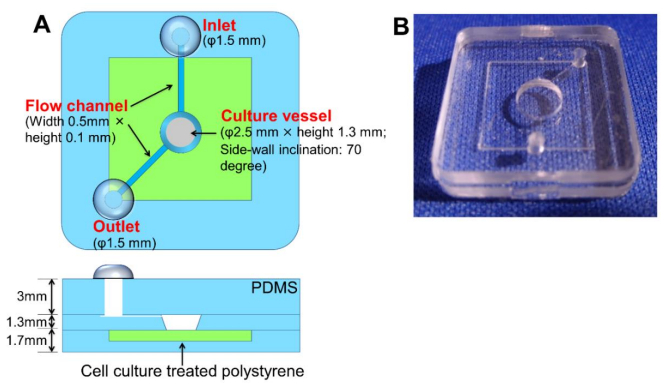
 DownLoad:
DownLoad: 